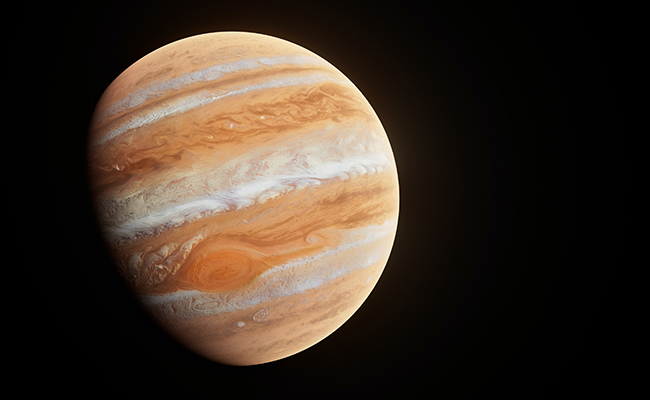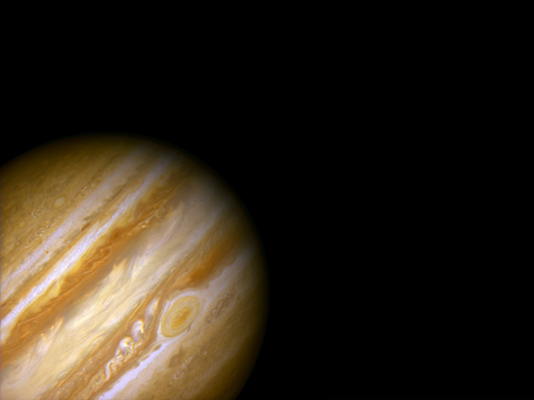


This huge, bright planet is the largest world in our solar system; four of its moons are the size of planets. It is different in structure from the solid inner planets. Apart from a small rocky core, Jupiter is mainly hydrogen and helium. Below the cloudy atmosphere, the pressure is so great that these are liquid rather than gas. Deep down, the liquid hydrogen behaves like a metal. As a result, Jupiter has a strong magnetic field and fierce radiation belts. Jupiter emits more heat radiation than it receives from the Sun, because it continues shrinking at a rate of a fraction of an inch per year. Had Jupiter been only 13 times more massive, this contraction would have made the center hot enough for nuclear fusion reactions to begin, though not to be sustained for as long as in a star.


The cloud tops of Jupiter seem to be divided into a series of bands that are different colors. The light bands are called zones, and the dark bands belts. The north tropical zone (equivalent to our northern temperate zone) is the brightest, its whiteness indicating high-level ammonia clouds. The equatorial belt, surrounding Jupiter's equator, always seems in turmoil, with the atmosphere constantly whipped up by violent winds. Across the planet are a number of white or red ovals. These are huge cloud systems. The brown and orange bands indicate the presence of organic molecules including ethane.